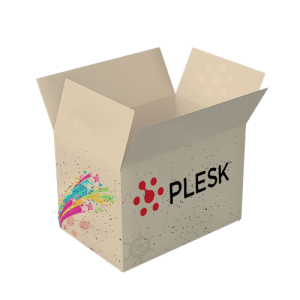Modern businesses rarely sit in one building or one time zone. Teams include remote staff, contractors, regional branches and highly regulated departments that all need to stay in sync. Gem Team steps into this reality with one promise: keep work conversations safe, organised and easy to find. This long read explores what the platform offers, how it differs from big‑name chat apps, what early adopters like and where they want more, and why Gem Team is growing into a serious option for corporate communication.
What Is Gem Team
Gem Team is a corporate messenger and collaboration hub that puts security and governance front and centre without making daily work harder. It offers real‑time chat, voice and video meetings, file sharing and structured organisation pages in one platform that can live in the cloud or on servers you own.
Business First DNA
Gem Team is built for enterprise clients from the first commit. That history shows up in role‑based access, strong authentication, secure transport for data, and deployment modes that match real risk policies.
Cloud or On‑Prem Choice
Some companies like SaaS. Others such as banks, hospitals and government contractors need to keep data inside their own perimeter. Gem Team supports both hosted and self‑hosted models so sensitive traffic never has to leave the environment you trust.
Core Features
Messaging Built for Scale
Fast threaded chat makes it easy to keep projects moving. Departments get private channels, cross‑team squads can spin up shared spaces and one‑to‑one messages stay clean and searchable. Users can edit posts, add reactions, attach files and preview media without drowning in clutter.
Video Calls up to 300 People
Company town halls, training sessions or department briefs can all happen inside Gem Team. Built‑in video scales to 300 participants, so many mid‑size firms can host full hands without buying a separate licence.
Secure File Exchange
Files move through encrypted channels with retention rules you set. Connect to an existing storage back end to keep long‑term governance in place and avoid unmanaged file silos.
Multi‑Factor Security Stack
Admins can turn on two‑ or three‑factor authentication by role. Combined with mTLS encryption, this reduces risk from stolen credentials or intercepted traffic.
Cross‑Platform Reach
Employees on web, iOS or Android get the same feature set. Mobile parity keeps field staff and remote workers in the loop even when a laptop is out of reach.
Security Architecture
mTLS Traffic Encryption
Every client and service connection uses mutual TLS. Both ends authenticate and the data in transit is encrypted, blocking man in the middle attacks and rogue nodes.
Granular Rights and Audit Logs
Admins decide who can see which space, invite which role or export which file. Real‑time logs and optional SIEM export make life easier for compliance teams.
Reliable Delivery on Weak Links
Retry logic and resumable transfer mean large files or media uploads finish even on spotty networks.
Admin and Work Structure
Organisation Pages and Roles
Departments and reporting lines appear in a browsable tree so newcomers can find the right contact without asking in a public chat.
User Profiles and Contact Layer
Structured profiles list role, team and contact data. Cross‑team work speeds up when you can confirm who owns which process.
Announcement Channels
Broadcast channels keep HR, leadership or compliance updates visible and searchable instead of buried in daily scroll.
Adoption Journey
Phased Rollout Ideas
Kick off with a high‑security pilot group, then expand to other teams once value is proven. Gem Team supports mixed hosting so IT can stage deployments.
Migration Pointers
Map old chat rooms to new channels, review file retention rules, and import archives only where policy demands it.
Training Hints
Show users how to launch a call from a channel, share a file safely and find a department page. Short demo clips often convert sceptics.
User Feedback
Common Praise
-
Security posture removes long legal reviews.
-
One app reduces licence costs for chat and video.
-
Admin controls are clear and fast to learn.
-
Mobile apps run smoothly for frontline teams.
Feature Requests
-
More third‑party integrations such as task boards and CRM bots.
-
Deeper automation hooks for custom workflows.
-
Built‑in whiteboard or co‑editing tools during calls.
Competitive View
Gem Team vs Slack
Slack leads with its huge app directory. Gem Team appeals when security policies block public SaaS or when self‑host rights matter.
Gem Team vs Microsoft Teams
Teams ties deeply into Microsoft 365. Gem Team offers a lighter interface and simpler setup for firms that want clarity over depth.
Gem Team vs Open Source Options
Open source tools like Mattermost give full code control but require ongoing maintenance. Gem Team aims to deliver enterprise support and regular updates without heavy in‑house upkeep.
Ideal Use Cases
-
Regulated firms that need strict data control.
-
Teams replacing multiple chat and video apps with one secure hub.
-
Hybrid or mobile‑heavy workforces.
-
Organisations that require on‑prem or region‑bound hosting.
Roadmap Signals
Public notes hint at AI‑generated message summaries, automatic meeting recaps and richer analytics. Expect continued focus on identity integrations, compliance tooling and automation APIs.
Gem Team is gaining ground as a secure, easy to use alternative to the big chat incumbents. It blends everyday usability with the governance features that legal and security teams demand. If you need one platform for chat, calls and file sharing and you care about data sovereignty, schedule a pilot and see how it fits your workflow.






